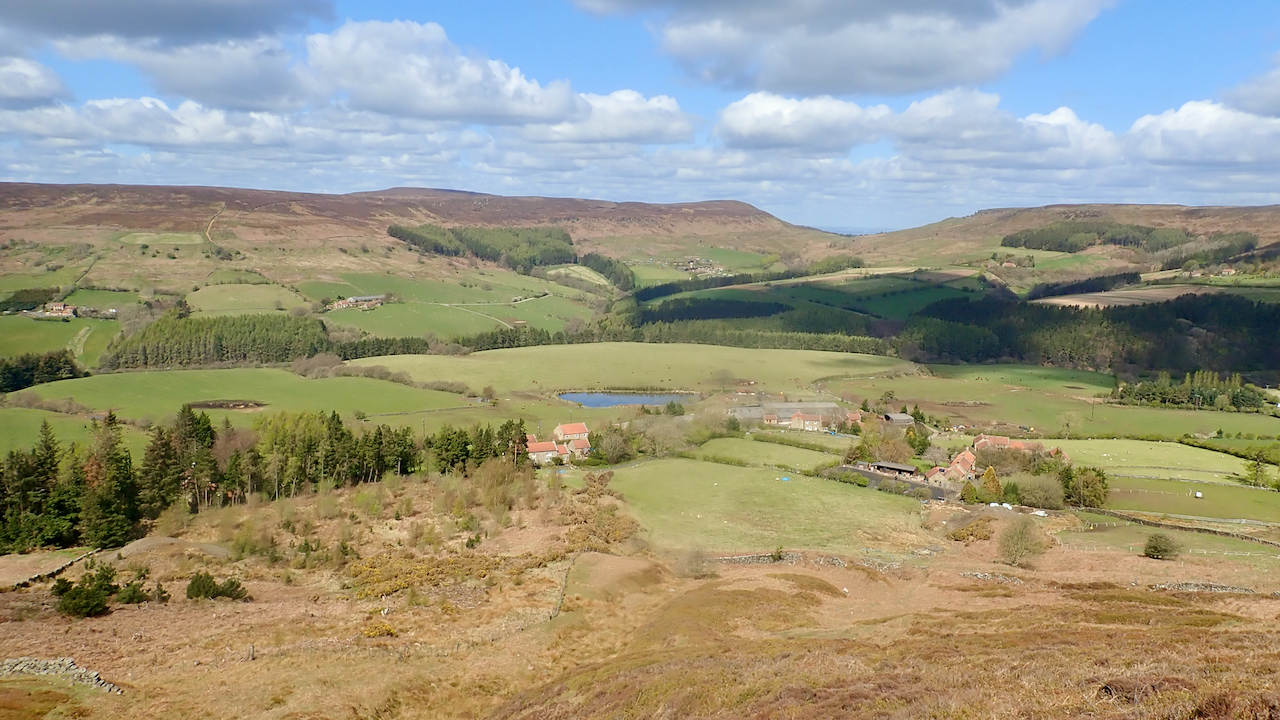Today is the 200th anniversary of the death of Napoléon Bonaparte, aged 51, whilst in exile on the island of St Helena in the middle of the Atlantic. The autopsy concluded he died of stomach cancer, but some believe he was killed by arsenic poisoning1Wikipedia Contributors. “Napoleon.” Wikipedia, Wikimedia Foundation, 5 May 2021, en.wikipedia.org/wiki/Napoleon#Cause_of_death. Accessed 5 May 2021.. This may not have been as sinister as it sounds, since glues and dyes at the time contained high levels of arsenic, including the glues used to fix wallpaper.
The featured image today is of Cold Moor and Hasty Bank taken from Urra Moor. On the 1857 O.S. Map2“View Map: Yorkshire 43 (Includes: Bransdale; Farndale West Side; Ingleby Greenhow; Westerd… – Ordnance Survey Six-Inch England and Wales, 1842-1952.” Maps.nls.uk, 2021, maps.nls.uk/view/102344293#zoom=6&lat=5538&lon=1385&layers=BT. Accessed 5 May 2021., Cold Moor is mapped as wooded with the name of Mount Vittoria Plantation.
There is a Vittoria (sometimes written Vitoria) in Spain and it was where the army under Napoléon’s brother, Joseph, were routed by the Duke of Wellington’s on 21 June, 1813. I’d like to imagine the wood being planted in memory of a local soldier killed in the battle of Vittoria but I have found no evidence for this.
So, a tenuous link then to the infamous political leader, a leader who may have been brought down by wallpaper. Perhaps that is a fate which will not be the last.
- 1Wikipedia Contributors. “Napoleon.” Wikipedia, Wikimedia Foundation, 5 May 2021, en.wikipedia.org/wiki/Napoleon#Cause_of_death. Accessed 5 May 2021.
- 2“View Map: Yorkshire 43 (Includes: Bransdale; Farndale West Side; Ingleby Greenhow; Westerd… – Ordnance Survey Six-Inch England and Wales, 1842-1952.” Maps.nls.uk, 2021, maps.nls.uk/view/102344293#zoom=6&lat=5538&lon=1385&layers=BT. Accessed 5 May 2021.

Leave a Reply